FULL GUIDE to Your 60 Yard Dash Start
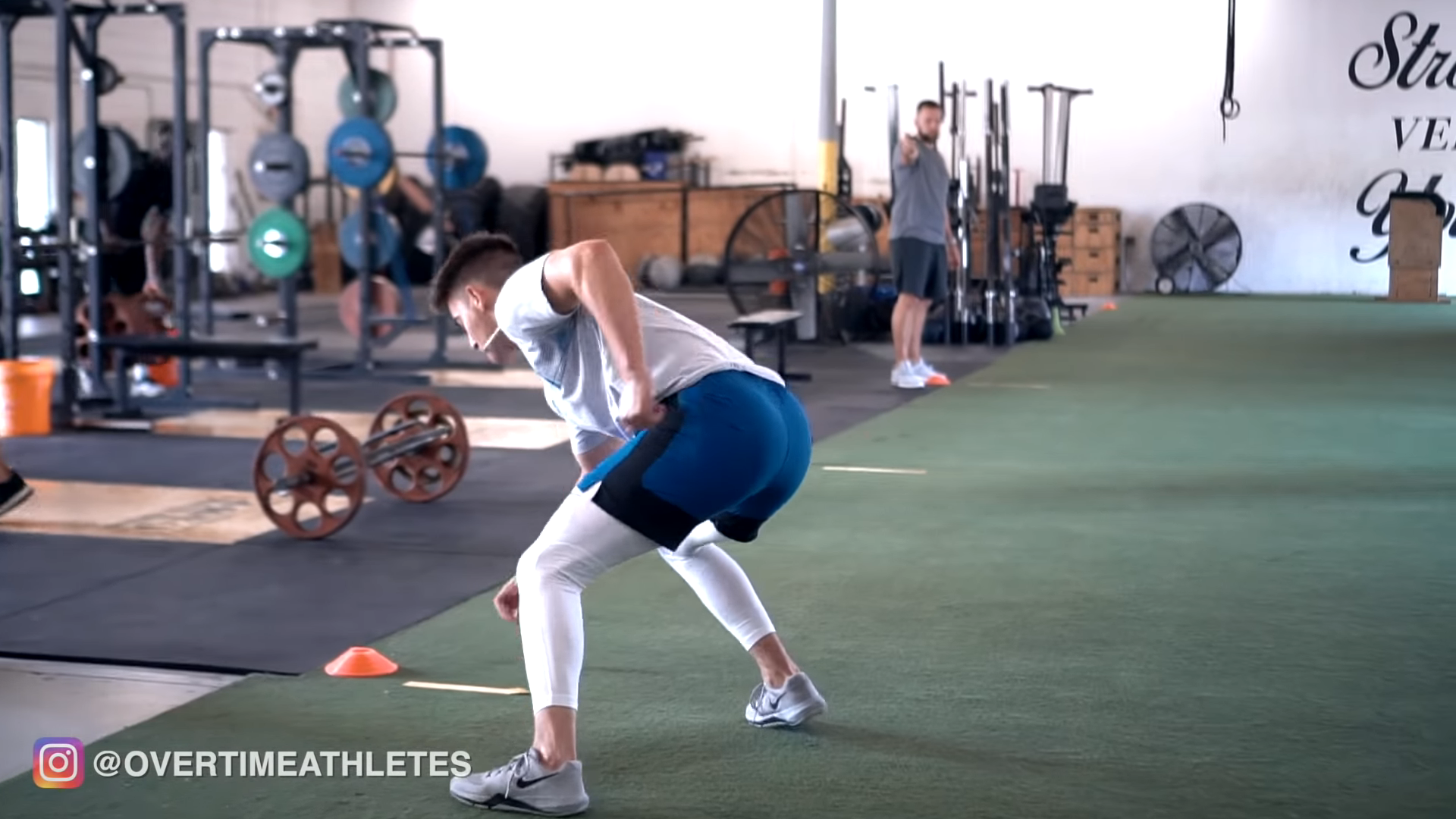
This is BIG. Scouts and coaches are putting more and more weight behind physical tests… The broad jump, vertical jump, pro shuttle, and ESPECIALLY the 60 yard dash.
Out of all of these, the 60 yard dash might be the most heavily valued physical test. ESPECIALLY for an athlete on the cusp of getting a scholarship offer or not, or getting a call from a team or not.
So naturally, athletes always ask me: What’s the quickest way to run a faster 60 yard dash?
The answer: Hone your 60 yard dash start.
Your 60 yard dash start has LESS to do with your athleticism and MORE to do with mechanics and technique. For you, that means you can increase your 60 yard dash time in one single day with an hour of focused work.
And your technique is especially important because research has shown that if you start a sprint with the wrong mechanics, you’ll finish with those same faulty mechanics. You can’t change your mechanics mid sprint
Want to learn how?
Below I’m going to share exactly how to hone your start AND increase your 60 time (possibly in less than an hour). I’m also going to share some plyometrics and acceleration drills that will help make the first three steps of your 60 more powerful, explosive, and fast.
Big win, right?
Let’s get into it:
The 60 Yard Dash Stance
The first aspect of the 60 yard dash I address with a baseball athlete is their stance.
The 60 yard dash stance serves as the foundation that you explode out of. You need to make sure your foundation is stable, sturdy, and balanced so that you don’t leak force as you transition into your sprint.
So first, make sure you’re relaxed. Let your shoulders loose, relax the knees a bit, ease into your stance.
Once you’re relaxed, you’ll want to make sure you have enough width in the legs. For most baseball athletes, this will be just outside of shoulder width (shown below).

Once you’ve got you’ve established your base, open your lead leg/hip 45 degrees. If your feet are pointed where your chest is pointed, it makes for an inefficient start as you have to move the foot before you transition into your sprint.

From there, place your back heel in line with the middle of your front foot (shown below).
In the back leg, you want to have your back heel in line with the middle of your front foot. This means that the back foot is slightly in front of the front foot. The reason for this is the first leg to move out of the 60 stance is your rear leg. If your feet are even with each other, that creates inefficient movement.
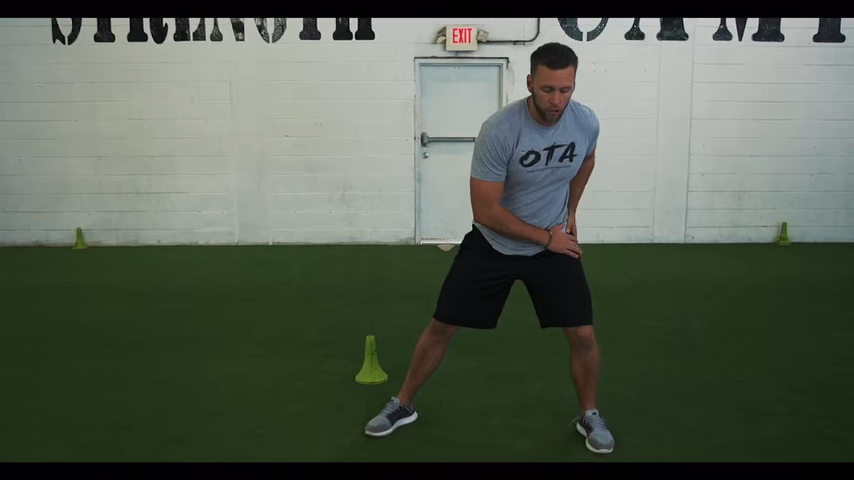
Next, you want to push the hips back with the weight a little bit on the heels. A lot of guys like to bring the shoulders over the legs. This forces them to perform inefficient movement as they transition out of their start.
Again, the key to the whole 60 start is efficiency and avoiding any movement that can possibly slow us down.
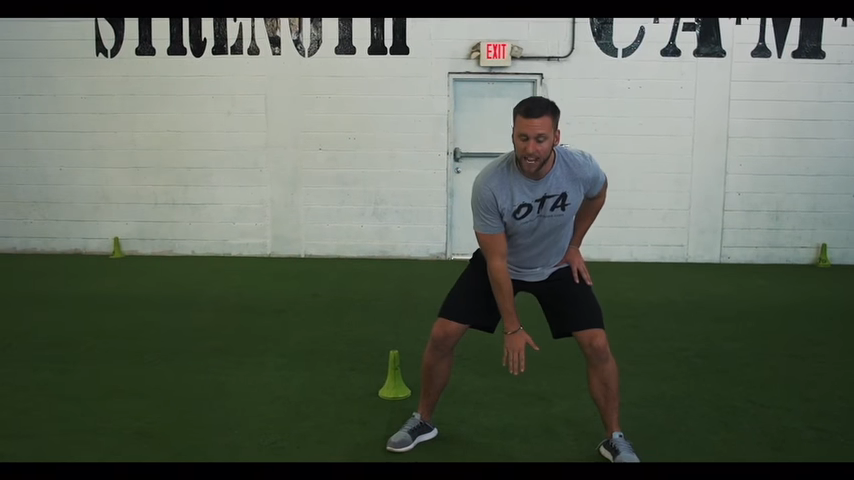
Instead, keep the shoulders right over the knee caps.
The last thing you want to address is your weight distribution. I tell my athletes to stay 40/60. 40 percent of their weight should be on their front leg, 60 percent on the back.
The 60 Yard Dash Stance – Upper Body
The next area to address in the 60 yard dash is the upper body.
First, you’ll want to get your arm placement right. Your lead arm, the area closest to the finish, should hang down. It should be relaxed and loose. This is the same arm you’ll open up with when you go to perform your start.
Your back arm should be bent and your hand should be placed right where your pocket would be.

THE 60 YARD DASH START
The last aspect of increasing your 60 yard dash time is the actual start.
The start is your transition from your stance into your steps, or acceleration phase. We build speed in this phase.
Positioning is the main point you’ll want to hammer home with acceleration. The better position you’re in, the more force you’ll be able to apply into the ground and propel down the field.
In order to enter the right acceleration position, you want to get your shoulders out in front of you like you’re diving in a pool. Then, you want to apply as much force into the ground as possible to build speed.

This is where the mistakes come in.
A lot of guys pop straight up out of their stance, which forces them to produce more force vertically and less force horizontally.
Here’s how you can get into an efficient acceleration position.
Your first motion out of your stance is going to be similar to that of a dive. That’s why I tell my guys to “dive in the pool”.
That means you want to get into a position where your shoulders are out in front and you’re using both of your legs to generate speed as fast as you can.
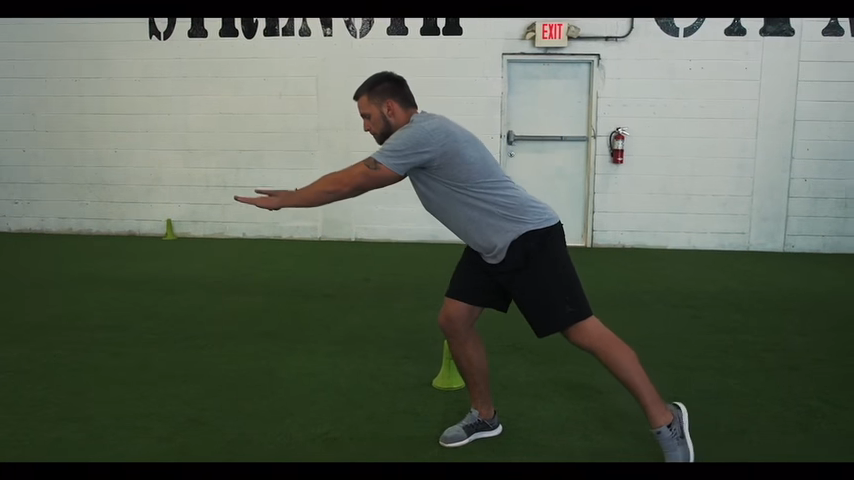
Now, upon the transition into the acceleration phase, as you “dive into the pool”, your front elbow should drive back. Your rear arm will swing forward as it occurs. This will prevent over-rotation.
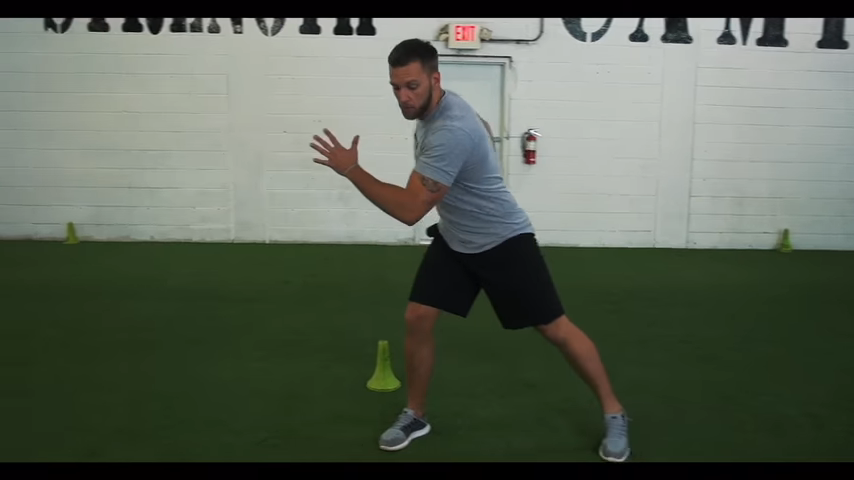
The final point I touch upon with my guys is “trusting their feet”. Whether they’re hitting or stealing a base, I tell them to tuck their chin, and look at their toe over the kneecap.
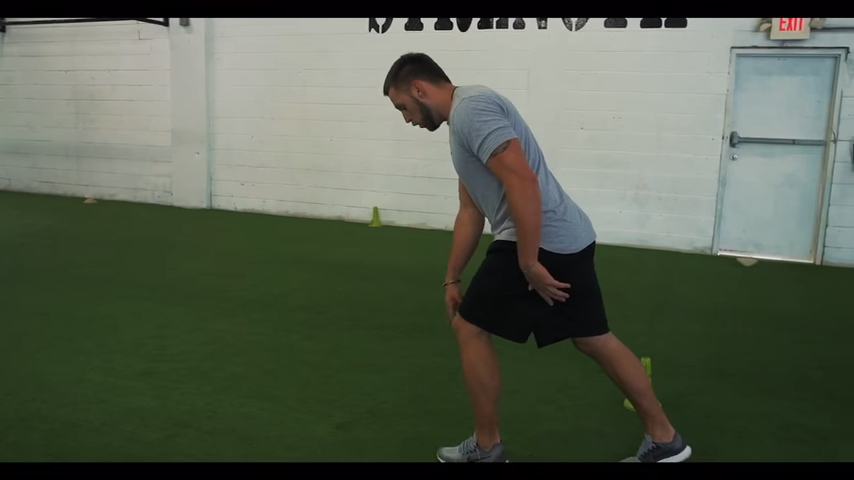
If you put all of this together, you’ll find yourself in the most efficient position to build speed.
Plyometrics to Increase Your 60 Yard Dash Time
Technique and mechanics are absolutely MONUMENTAL for a fast 60 time, but a little extra power doesn’t hurt either. So, below I’m going to share three plyometrics that will improve your lateral explosiveness and translate into a faster 60 yard dash time.
Here we go:
1. Lateral Broad Jump
The lateral broad jump is a foundational lateral power move. Just because it’s foundational doesn’t mean it’s not effective I perform these, or a variation of these, at least once a week with my professional ball players, so you know they can work for you.
Here’s how to perform lateral broad jumps:
- Stand on your back leg
- Push the hip back and bend the knee slightly
- As you do, swing the front leg behind the back leg
- As you extend, swing the front leg out
- Land on two feet facing forwards
- Switch sides and repeat
2. Lateral Bounds
Lateral bounds work abduction and adduction of the hip, which are also critical components of the 60 start. They also may actually be more specific to the 60 start than any other exercise because they force you to produce power out of two legs.
Here’s how to perform lateral bounds:

- Start on two legs
- Load the hips and bend the knees as you shift your center of mass slightly to the right
- Push off the ground and get up as high as you can while landing slightly to the right of where you started
- Continue for 10 yards then switch sides
3. Single Leg Broad to 90 Degree Jumps
The last plyometric to help your 60 time is a reactive plyometric. Single leg broad to 90 degree jumps work adduction and abduction of the hip on a single leg. They also add a reactive component that can help reduce the amount of time it takes you to generate force before you accelerate out of your 60 time.
Here’s how to perform single leg broads to 90 degree jumps:
- Start on one leg with a cone about 3 feet in front of you
- Perform a single leg broad jump to the cone
- When you reach the cone, quickly react off the ground and push out laterally
- Repeat on both legs going in both lateral directions
More Drills for Your 60 Time, Bat, and Fielding
If you’re serious about your baseball performance, you should train like the pros.
And you can do that with my 24 week program, Baseball Power Program.
Baseball Power Program contains the exact workouts I use to make my MLB and high caliber college players into five tool players.
I can’t share all the details here, but you can find more of them below:
Click Here to Discover How to Become a Five Tool Player
1 Response to "FULL GUIDE to Your 60 Yard Dash Start"
[…] into your 60 stance. (For more help with your 60 sec dash, see this post). Run hard through 10 yards, then […]